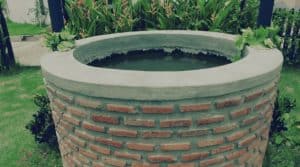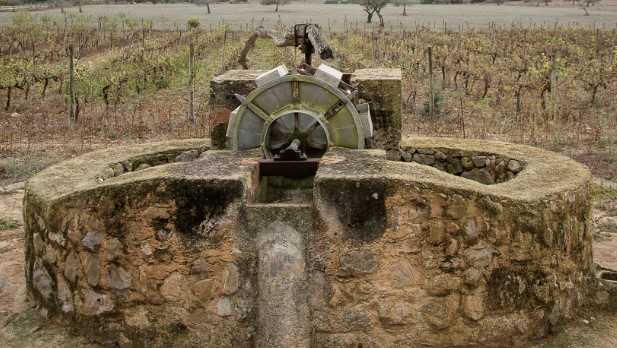Understanding the Different Types of Wells: Bored, Driven, Dug, and Drilled
Have you ever considered the type of well you need for your property to access water? With abundant natural resources like freshwater lakes and underground pools, finding the proper well is essential for ensuring a reliable water supply. But, navigating the world of wells can be daunting, especially when you’re unsure of the differences between dug, drilled, driven, and bored wells. Moreover, you might be worried about the costs, local health department regulations, and potential contamination from septic tanks or surface water.
The good news is that you no longer need to feel overwhelmed. We’ll break down the complexities of each type of well, from hand-dug wells that reach only shallow water to drill wells with a continuous casing that tap into confined aquifers and everything in between. We’ll discuss the factors that make each suitable type a good or bad choice, the costs involved, and the methods used to access water, like rotary drilling machines and screened well points.
By understanding the various aspects of wells, such as the water table, local geology, and water quality, you’ll be better equipped to make informed decisions regarding your drinking water. Whether you’re concerned about water draining too quickly in a large-diameter dug well or the potential for contamination in a shallow well from tiny animals and surface sources, we’ve got you covered.
A Different Type of Well For Your Needs
Bored Wells
What are Bored Wells?
Bored wells are created by excavating a large hole into the ground until it reaches the water table. These wells are typically shallow, usually no more than 100 feet deep, and rely on incoming water from the surrounding soil and unconsolidated material. They may be lined with concrete tile, bricks, or other materials to prevent collapse and contamination.
Pros of Bored Wells
One advantage of bored wells is that they have been around for centuries, making them a tried-and-true option for obtaining water. They can provide a reliable water supply in areas with a high water table. The large diameter of a bored well also allows for easy access to clean and maintain them, which is essential because, as you’ll see, they’re prone to contamination.
Cons of Bored Wells
The shallow nature of a bored well makes them susceptible to contamination from surface water and nearby wells. Water quality can be easily compromised by small animals or less permeable materials, such as bentonite clay or fine sand, seeping into the well. Additionally, they may not be suitable for areas with solid rock since excavation can be more challenging.
Driven Wells

What are DRIVEN Wells?
A driven well is essentially a small diameter well constructed by joining lengths of steel pipe, usually 1¼ inches or 2 inches in diameter. Each section of the pipe is about 4 or 5 feet long, and a drive-point well screen with a hardened steel tip is attached to the bottom. This well screen allows groundwater to flow into the well while keeping out pesky sand particles. They can reach depths of up to 30 feet when driven by hand or up to 50 feet (and beyond) by weighted hammers.
These wells pull water from the water-saturated zone above the bedrock, much like their cousin, the dug well. However, driven wells can often go deeper than dug wells, providing access to more groundwater in confined or unconfined aquifers.
Pros of a DRIVEN well
If you’re on a budget, driven wells might be your new best friend. In terms of time and money spent to reach water, a driven well is often the cheapest option. They’re easily driven, pulled out, and put down elsewhere, making them a versatile choice. Unlike drilled wells or flowing dug wells, driven wells don’t require a cable tool or specialized equipment, which is music to the ears of those looking for an affordable solution.
Cons of a driven well
Unfortunately, a driven well isn’t all sunshine and rainbows. Since they’re typically constructed in permeable sandy soils with a high water table, they can be vulnerable to contamination from activities such as subsurface sewage seepage systems and heavy use of fertilizers. Chemical contaminants can seep through the soil, enter the groundwater, and eventually enter your well.
Dug Wells

What are Dug Wells?
Dug wells have been around for centuries, often depicted as simple holes in the ground with buckets and ropes. These wells, also called excavated wells, are shallow water sources that typically measure less than 50 feet deep and 3 feet wide. Dug wells are popular for many due to their affordability, as they can be easily constructed using excavators, backhoes, or power shovels.
Pros of a dug well
One of the main advantages of a dug well is its simplicity. Hand-dug wells are suited to obtain water from less-permeable soils, such as fine clay, sand, and silt. Their large diameter allows them to access a larger aquifer area than other well types like drilled wells, which use a small diameter pipe. In addition, dug wells can be made deeper without much difficulty if needed.
Cons of a dug well
Unfortunately, the shallow depth of dug wells also comes with a downside. These shallow wells are vulnerable to contamination from nearby land surface activities and easily contaminated by surface water. Moreover, dug wells are more susceptible to lowered water levels due to drought, neighboring well interference, and local changes in drainage.
Drilled Wells

What are Drilled Wells?
Drilled wells consist of a hole bored (a borehole) into the ground, with the upper part of the entire depth of the well lined with casing. Drilling is typically conducted with a portable drilling machine brought to the site to construct the borehole. Flowing artesian wells, gas wells, and municipal wells are just a few examples of drilled wells.
Pros of Drilled Wells
Drilled wells offer some significant advantages over their counterparts. For one, they’re less susceptible to groundwater contamination than dug wells. This is because they can access a confined aquifer, which are layers of permeable rock or sediment called aquifers trapped beneath impermeable material layers. With proper well head protection and a well screen, a drilled well can provide a safe and reliable water source.
Additionally, these wells are more efficient than other types of wells, as they can pump water from greater depths. When it comes to water supply, the deeper the well, the more likely it is to tap into a reliable and uncontaminated source. So, take a deep breath and dive into the world of drilled wells!
Cons of Drilled Wells
However, drilled wells aren’t without their drawbacks. One of the main disadvantages is that they may access deeper, older groundwater that has had more time in the subsurface to dissolve naturally occurring materials. This can result in higher concentrations of dissolved constituents, such as arsenic and fluoride. Yikes! To mitigate this risk, you may need additional water treatment or choose a different type of well altogether.
Wrapping Up
Next time you find yourself pondering the mysteries of the water table, or debating the merits of a sand point versus a neat cement seal, just remember: North California’s #1 Well Drilling Company, WildHeron Drilling, is only a call or click away. With their exceptional team of professionals, they can answer all your well-related questions and guide you in choosing the best type of well for your needs.
Don’t let the thought of incoming water give you cold feet! Reach out to WildHeronDrilling, and let their team of experts help you tap into the perfect well solution for you. After all, wells tend to be better when drilled with a helping hand, and who better to bring that to the table than WildHeron Drilling?
So, give them a call, and let the water flow!

